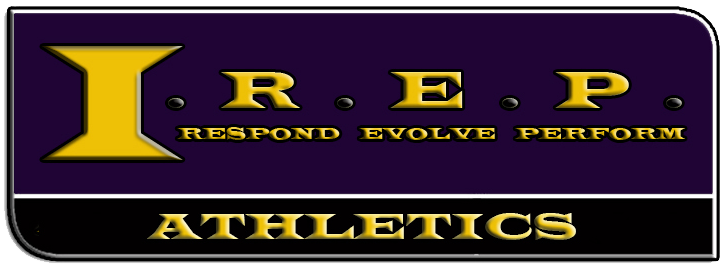Balance Between Quality and Availability of Equipment
Your bicycle can be the most expensive single piece of equipment. While the allure of carbon fiber and advanced groupsets is strong, the focus should be on reliability and suitability. A secondhand bicycle stands out as a cost-effective solution. When evaluating used bikes, ensure that the fitting is correct for your body, as an ill-fitting cycle can lead to decreased efficiency and potential injury. An experienced local bike shop can often provide assessments and make necessary adjustments for a fraction of the cost of a new bike.
Investing time into learning basic maintenance skills can extend the life of your equipment and reduce ongoing costs. Simple tasks such as changing a tire, lubricating the chain and gears, and adjusting the brakes can be learned through community workshops or online tutorials.
 The wetsuit should offer good buoyancy and flexibility without compromising thermal protection. Last season’s models typically perform comparably to the latest arrivals, with the added benefit of being significantly discounted. High-quality goggles that offer clear vision and a leak-proof fit can often be found at reasonable prices. Consider these elements as investments and avoid skimping on items integral to your comfort and performance in the water.
The wetsuit should offer good buoyancy and flexibility without compromising thermal protection. Last season’s models typically perform comparably to the latest arrivals, with the added benefit of being significantly discounted. High-quality goggles that offer clear vision and a leak-proof fit can often be found at reasonable prices. Consider these elements as investments and avoid skimping on items integral to your comfort and performance in the water.
Shoes must be carefully selected for fit and support, considering the biomechanics of your gait. Specialty running stores often have knowledgeable staff who can assist in selecting the appropriate footwear within your budget. Purchasing last year’s shoe models can offer substantial savings.
Specialist triathlon brands offer garments designed for breathability and quick drying, but these can carry a premium. Generic sports clothing that fulfills the same needs could be purchased at a lower cost, especially when discount stores clear their inventory.
In the sphere of accessories such as cycling helmets, sunglasses, and heart rate monitors, informed choices can trim costs without forgoing safety or important functionality. A helmet must meet safety standards, but beyond that, aerodynamic features offer marginal gains compared to their additional costs. Basic models can suffice, provided they fit well and are comfortable.
A basic GPS watch and some of the many free online training platforms can supply all the necessary data for most athletes. Investment in expensive gadgets should only be considered if they have a clear and measurable impact on training outcomes.
Training Resources
The internet offers plenty of plans created by experienced coaches and seasoned athletes. While selecting a plan, it’s important to consider your fitness level, experience, and the time you can dedicate to training.
Websites dedicated to triathlon training often feature a variety of free training programs ranging from beginner to advanced levels. Engaging with triathlon communities on forums and social media can lead you to share advice and training strategies from those who have completed Ironman races themselves.
Joining local triathlon or athletics clubs can be an excellent way to gain advice and support without heavy investment. For a nominal membership fee, these clubs offer organized training sessions, coaching advice, and the camaraderie of like-minded individuals who share your goals. Group training can provide the motivation and accountability that is sometimes lacking in solo endeavors. Many communities have swimming, cycling, or running groups that meet regularly, providing structured workouts at minimal or no cost.
Various affordable and even free online tools and mobile apps have surfaced, designed to aid athletes in monitoring and improving their performance. Platforms such as Strava, TrainingPeaks, and MyFitnessPal can be utilized effectively to plan, record, and analyze your workouts. These tools provide insights into your progress and help tailor your workouts based on performance data.
A considerable amount of knowledge can be acquired from Ironman and triathlon-focused books written by experts in the field. These books often provide comprehensive training guides, nutritional advice, and insights into the mental aspects of endurance racing. Public libraries can be a resource in this regard, offering access to a wide range of such books at no cost.
Podcasts are another medium where one can find interviews with coaches, professional athletes, and Ironman finishers, all offering a treasure trove of tips and experiences. These can be accessed for free and listened to during workouts or commutes, making them a convenient way to gather information.
If personal coaching is something you are considering, evaluate the cost against the benefits it may bring. While one-on-one coaching provides personalized training plans and direct feedback, it’s the most expensive resource. An alternative could be group coaching or clinic-style training sessions, which offer many of the advantages of personalized coaching but at a reduced rate due to the shared cost among participants.
Travel and Accommodation
Participating in local or regional Ironman events can eliminate the need for air travel, car rentals, and prolonged hotel stays. This reduces travel stress and can allow you to focus more on your performance rather than logistical concerns.
 Booking flights and accommodations early can lead to significant savings, as prices tend to increase closer to the event date. Keep an eye out for early bird specials and promotional deals that airlines and hotels often offer.
Booking flights and accommodations early can lead to significant savings, as prices tend to increase closer to the event date. Keep an eye out for early bird specials and promotional deals that airlines and hotels often offer.
Consider booking refundable or transferable travel tickets to provide flexibility in case plans change. Some travel credit cards offer rewards or points that can be redeemed for flights or hotel stays, which can further reduce out-of-pocket expenses.
Alternative lodgings such as vacation rentals, hostels, or even camping near the event location can provide substantial savings.
Splitting the cost of a rental with fellow athletes or friends can considerably decrease individual expenses. Some Ironman participants may even find local families willing to host competitors, often through connections made in triathlon clubs or online forums.
Airlines often charge extra for oversized and overweight baggage, which can include bike cases. Alternative options include renting a bike at the destination or using a bike transport service, though these should be weighed for cost versus convenience.
Organizing and packing your gear efficiently can prevent excess baggage fees. Use a checklist to pack only the necessities and ensure that consumables like nutrition and hydration products can be purchased upon arrival to reduce luggage weight.
If traveling with a group is an option, it can be more economical. Group discounts may be available for flights, accommodations, or even car rentals. Furthermore, traveling with others can lead to shared resources, such as group meals, which can cut down on individual spending.
Nutrition
The foundation of an economical and effective Ironman diet is to base your meals around whole foods. Foods such as rice, pasta, beans, seasonal vegetables, lean proteins, and fruits can often be purchased inexpensively, especially when bought in bulk. Preparing meals at home allows you to control portion sizes, nutritional content, and your grocery bill. Cooking in batches can save both time and money.
Create a weekly menu and purchase only what is necessary, reducing waste and redundant spending. Keep an eye on sales and discounts at your local grocery store, and do not shy away from store brands, which often match their name-brand counterparts in quality but come at a reduced price.
Commercial sports nutrition products, such as gels, bars, and electrolyte drinks, can be convenient but costly. Many of these products can be replicated at home with basic ingredients. Homemade energy bars can be made from oats, nuts, and dried fruit. Electrolyte drinks from a mix of water, juice, salt, and sugar. These alternatives allow you to customize ingredients to your taste and nutritional needs.
Bulk buying non-perishable items like nuts, seeds, and whole grains can lead to long-term savings. Share the cost of bulk items with training partners or friends. By pooling resources, you all can access bulk prices without overstocking individual pantries. Local farmers’ markets can be a source of fresh produce at lower prices, providing quality ingredients that support a healthy diet.
Focus on important supplements based on dietary gaps that may not be filled with food alone. Ironman athletes may need to supplement with electrolytes or vitamin D during certain high-volume training phases. Indiscriminate use of supplements should be avoided. Ensure you’re taking supplements that have a clear benefit to your performance and recovery.
A lighter training day may not require the same caloric intake as a long training session. Adjust your meal portions and content accordingly to avoid unnecessary food expenses. It is vital to ensure you are always sufficiently fueling your body to support recovery and performance. This means that on some heavy training days, you will need to invest more in your nutrition.
Smart budgeting does not mean compromising on your Ironman dream. It’s about making savvy choices that boost your training efficiency while curbing unnecessary spending. By prioritizing value for money, focusing on key training aspects, and shopping wisely, you can compete in an Ironman without financial strain.
